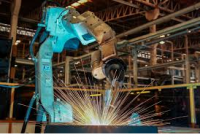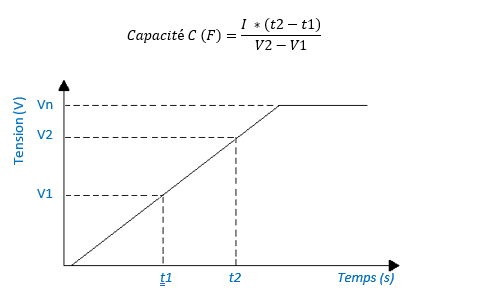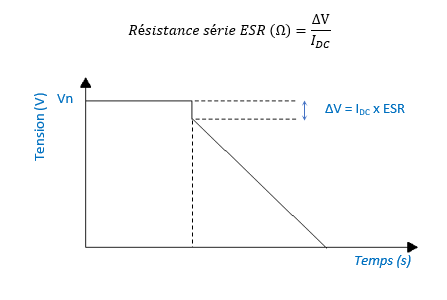Supercapacitor introduction
What a supercapacitor (supercap) or even called ultracapacitor (ultracap) is?Supercapacitors are very promising components halfway between conventional electrolytic capacitors and batteries. Supercapacitors are characterized by their ability to:
- Store and supply high power and energy densities.
- Ultra fast charges and discharges: up to 0 000 times faster than traditional batteries.
- Very long life span: between 100 000 and 1 000 000 cycles versus 400 to 2000 for lithium batteries for example.
- Wide operating temperature range of-40 to + 65 °c.
- Environmentally friendly: no risk of explosions (compared to batteries or other capacitors).
- Maintenance free.
Euracap products
The Euracap range consists from one side of high performance ultracapacitor cells, low resistance series ranging from 1 to 3400F, from 2 to 3v. And on the other hand, assembled modules according to your drawings and specifications.
Euracap Product Features:
- Very low internal resistance (ESR)
- High power density
- High reliability
- Long life
- Excellent value for money
Energy storage Solution based on supercapacitors
Euracap accompanies you in the definition of solutions in relation to your needs.
Euracap realizes the Assembly of ultracapacitors modules, these assemblies include the circuits of control and management of the charges and discharges as well as the cells balancing.
All fixtures and assemblies are tested at 100% before being shipped.
Ultracapacitors applications
Euracap Ultracapacitors provide a high level of energy and performance, quality and reliability. Adapted to extreme conditions, they show stable performance in each of their applications. Our solutions, developed according to your needs, are implemented in many sectors requiring efficient storage and energy supply.
Automotive
 Provide the starting power of electric or hybrid vehicles, stabilize the power supply of the start & Stop systems, recover energy during the braking procedure and provide power spikes, the Euracap supercapacitors fit Perfectly to the power requirements of automotive applications.
Provide the starting power of electric or hybrid vehicles, stabilize the power supply of the start & Stop systems, recover energy during the braking procedure and provide power spikes, the Euracap supercapacitors fit Perfectly to the power requirements of automotive applications.
Transport
 Supercapacitors are used in many railway applications for the recovery and return of braking energy as well as the frequency and voltage stabilization. They are also used for the start-up of locomotive and heavy-duty engines in order to remove imposing batteries or, in some cases, to prolong the life of the large batteries used.
Supercapacitors are used in many railway applications for the recovery and return of braking energy as well as the frequency and voltage stabilization. They are also used for the start-up of locomotive and heavy-duty engines in order to remove imposing batteries or, in some cases, to prolong the life of the large batteries used.
Energy Production and Distribution
 Euracap supercapacitors offer multiple benefits to energy producers and distributors, both in the production of renewable energy such as solar and wind energy and traditional energy production. EURACAP products respond to the problems of energy storage, power stabilization and power peak input.
Euracap supercapacitors offer multiple benefits to energy producers and distributors, both in the production of renewable energy such as solar and wind energy and traditional energy production. EURACAP products respond to the problems of energy storage, power stabilization and power peak input.
Network and Telecommunications
 Reliable and efficient energy storage Solutions for the stability and quality of the network, Euracap supercapacitors are able to provide strong powers over a short period of time in order to regulate both voltage and frequency. They may also, in the event of a breakdown, support the uninterruptible power Supply (ASI) installations to ensure continuity of the centralized installations.
Reliable and efficient energy storage Solutions for the stability and quality of the network, Euracap supercapacitors are able to provide strong powers over a short period of time in order to regulate both voltage and frequency. They may also, in the event of a breakdown, support the uninterruptible power Supply (ASI) installations to ensure continuity of the centralized installations.
Industry
 Energy Source, power spikes, energy storage, power stabilization... the applications in the industry are very numerous and the Euracap supercapacitors find their place perfectly, as well as energy recuperator during the Maneuvers of construction vehicles, as in the management of the supply of machines and industrial robots.
Energy Source, power spikes, energy storage, power stabilization... the applications in the industry are very numerous and the Euracap supercapacitors find their place perfectly, as well as energy recuperator during the Maneuvers of construction vehicles, as in the management of the supply of machines and industrial robots.
Medical, Military, Consumer...
 Onboard energy storage, power spikes and energy supply in emergency situations, power stabilization, hybrid batteries, supercapacitors are found in a wide range of applications and in various sectors and varied.
Onboard energy storage, power spikes and energy supply in emergency situations, power stabilization, hybrid batteries, supercapacitors are found in a wide range of applications and in various sectors and varied.
Technical information
- Calculating the instantaneous current I (amps) through a supercapacitor
With C (Farads) The capacity of the cell and DV (volts) The variation of the voltage at its terminals for a duration dt (seconds).

- Calculating the energy E (Joules) contained in a supercapacitor
With V (volts) the voltage at its terminals.

- In a more conventional way, energy is expressed in Watt hour

- Charge the supercapacitor by applying its nominal voltage Vn (volts) and a constant charge current I (amps).
- Measure the time between T1 and T2 (seconds) during which the supercapacitor is passed from a voltage V1 to a voltage V2 (< Vn)

- Keep the supercapacitor charged for a few minutes at its nominal voltage Vn and then discharge it with a constant current IDC (amps) up to 0.1 Volt.
- Visualize the potential drop (∆ V in volts) at the start of the discharge.
- This potential fall ∆ V is equal to the discharge current multiplied by the ESR series resistance of the supercapacitor:

- Self-discharge refers to the natural voltage drop of a fully charged supercapacitor at its nominal voltage. Self-discharge evolves in a degressive and nonlinear manner. The self-discharge rate depends on the voltage level of the cell, the temperature, the imperfections of the separator and the impurities present in the electrolyte and on the electrodes. To measure self-discharge simply charge the cell/module to its nominal voltage and maintain the load (≈ 1h). The load circuit is then opened and the voltage is measured at the supercapacitor terminals after 72h.
- The leakage current is largely responsible for self-discharge, it is equal to the charge current required to maintain the supercapacitor at the specified voltage value. The more the supercapacitor is kept in tension, the lower the leakage current is. The measured result is influenced by the temperature, the voltage at which the device is charged and the conditions of ageing. It is sufficient to measure the current to maintain the supercapacitor at its nominal voltage after a period of 72h at room temperature 23 °c ± 2 °c.
- The origins of a voltage imbalance in a module:
The Supercapacitor series cannot be carried out simply because of the different parameters of each cell in the module. These differences are due to capacity values, temperatures, ageing and manufacturing parameters that may be different for each supercapacitor. These three reasons lead to voltage imbalances between each cell.
To overcome this problem, choose the most identical supercapacitors possible and use a voltage balancing system.
In a supercapacitor module, there are three main types of voltage imbalance:
- imbalance due to different leakage currents
- imbalance due to different capacities
- imbalance due to different series resistors (ESR).
- Risk of unbalanced voltages:
If there is no balancing, an overvoltage may appear on one of the supercapacitors in the module. This leads to the gradual and accelerated deterioration of the cell. Indeed, the overvoltage decreases the capacity, increases the series resistance (ESR), and can lead to the destruction of the component (the electrolyte in the cell begins to decompose, producing gaseous products as well as an accumulation of pressure up The destruction of the cell). Moreover, it should be noted that the total life expectancy of a supercapacitor module is equal to the lowest life expectancy of the most critical cell.
The balancing of the voltages within a module is therefore important in each phase of use (load, discharge, rest) in order to maintain its proper functioning and to increase its service life. For this reason, Euracap integrates in its modules an efficient balancing circuit, maintaining the integrity of the cells throughout the cycles of use.
